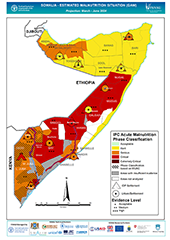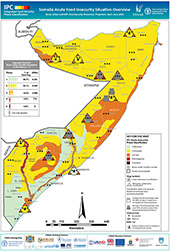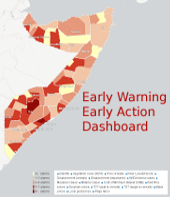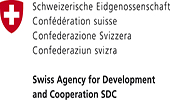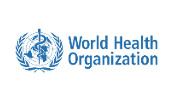IPC / User Guide
User Guide
Posted February 4, 2009
The purpose of the guide is to provide you with a practical step-by-step explanation of how to actually implement the IPC, a process and set of tools to guide and communicate food security situation analysis. The guide is designed for food security practitioners that are using the IPC in conducting food security assessments and analysis, and can be used either as preparatory reading in headquarters or as a reference guide in the field.
This Users Guide is one of several products that have been developed to support the use of the IPC, the latest versions of which can be found at the IPC website: www.ipcinfo.org. Two other main products include:-
- The Integrated Food Security Phase Classification Technical Manual, which provides detailed technical guidance on the use of the IPC for food security analysis. This manual discusses the rationale for developing the IPC, the analytical logic of the IPC, and the details of the various indicators and tools that form the basis of the IPC analysis. The Technical Manual should be considered the primary source of information about the IPC, and will be referenced many times in this User Guide.
- IPC training courses and presentations, including distance-learning modules and courses to be delivered in-person by a trainer. These courses not only present the rationale for developing the IPC, its analytical logic, and the details of its various indicators and tools, but also include exercises and questions for the users, as they are designed to educate practitioners about the IPC. These courses serve as preparatory training before practitioners begin to use the IPC.
The IPC User Guide complements these other products, walking you through the step-by-step ‘how to’ of implementing the IPC in the field. Ideally, users will have already completed an IPC training course, and will have the IPC Technical Manual on hand for reference while using this guide. However, even on its own this IPC Users Guide will be a valuable tool for food security practitioners to simplify the process of conducting an IPC analysis.
The guide is divided into one introductory section that includes the Getting Started and Overview of the IPC subsections, and eight modules that go through the step-by-step process of how to do an IPC analysis. The introductory overview of the IPC includes subsections on ‘Why the IPC?’, ‘What It Is and Added Value’; ‘What It Isn’t’; and a basic description of the four main components of the IPC (the Reference Table, Evidence Templates, Cartographic Protocols, and Population Tables).
Following the brief overview the modules on how to do an IPC analysis are introduced:-
Module 1: building your evidence;
Module 2: doing the phase classification;
Module 3: risk analysis;
Module 4: the number game: estimating populations in each phase;
Module 5: impact analysis and what to do about it;
Module 6: developing your map- information that you need to give to you GIS technician;
Module 7: how do you know you got it right? the peer review process; and
Module 8: how to establish an IPC in your country.
Please note that the fundamental purpose of this guide is to make the use of IPC easier for food security practitioners like you. As such, this guide will be regularly updated based on user feedback.
Please feel free to send any comments or suggestions on how the guide could be improved to: contact@ipcinfo.org.
